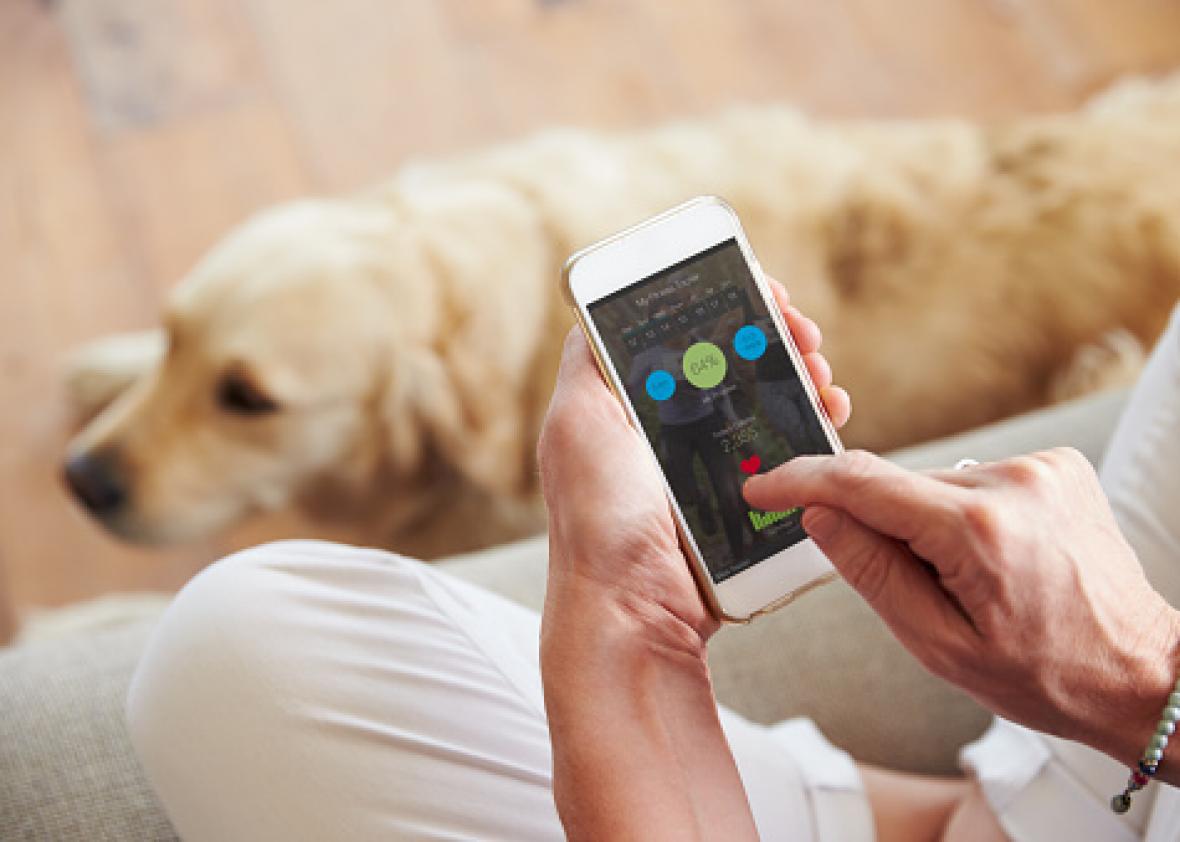A new study published in the Journal of the American Board of Family Medicine has found that the majority of fertility apps are not reliable forms of birth control. A team from Georgetown University’s School of Medicine looked at 95 mobile apps available via iTunes and Google Play, the most popular of which have been downloaded more than a million times each, and found that only a small fraction of them delivered accurate results.
Of the 95 apps available, 55 of them had disclaimers saying they should not be relied upon as birth control, and 10 did not attempt to predict the fertile days in a woman’s cycle. The researchers tested the remaining 30 apps by entering seven cycles’ worth of information—including fluctuations found in cervical fluid, basal temperature, and hormones found in urine—from real women. Only six of the apps got a perfect score on accuracy, meaning they made fertility predictions that reflected the women’s actual fertility windows. (A woman’s fertility window lasts for approximately three to six days, because sperm can survive in the fallopian tube for up to five days leading up to the moment the egg leaves the ovaries, after which it has only 12 to 24 hours during which it can be fertilized.) The best rated apps were Ovulation Mentor, Sympto.org and iCycleBeads. Glow, one of the most popular apps, fared poorly.
This study is important news for the growing number of women who are relying on non-hormonal techniques to avoid pregnancy. Historically, women did this using the rhythm method, or counting their cycles and avoiding sex around the middle of the cycle when ovulation was likely. As the popularity of the pill indicates, this was hardly a foolproof method. But new technology, including ovulation urine test strips, and an increased awareness of the biological indicators of ovulation, means women today have the capacity to be more precise in their predictions than women in the past.
Dr. Marguerite Duane, a family physician and adjunct associate professor at Georgetown University who led the study, is a proponent of this technique, known as fertility awareness based methods, or FABM. For her, the findings are a warning about blind trust in technology, and not non-hormonal birth control. “We have this inherent trust that the more technological it is, the better it is,” she told Mother Jones. “So if it failed and a woman became pregnant, she would blame the method, not the app.”
The method can be actually be quite reilable when ovulation is tracked in three ways, used alone or in combination. The first is to monitor cervical discharge, which becomes slippery and stretchy before the egg is released from the ovaries. (This fluid helps propel the sperm up through the uterus and into the fallopian tubes, where insemination takes place.) The second is to monitor basal body temperature, or the temperature of the body at rest, and look for a spike. A woman’s temperature is lower for the first half of the cycle, rises around ovulation, and stays higher for the second half of her cycle. Of course, this method only alerts a woman of ovulation after the fact, but a few months of tracking one’s temperature can reveal patterns that are somewhat predictive. The third is to test urine (or blood) for luteinizing hormone (LH), which surges 24 to 36 hours before ovulation and informs the egg that it’s time to fully mature and leave the ovaries.
Monitoring these functions can be an effective form of birth control, but they require a lot of work. As Martha Kempner pointed out in Rewire last year, the failure rates for FABM when used correctly and consistently are between 0.4 and 5 percent. Under typical use, the failure rates are between 12 and 14 percent. Condoms, by comparison, have a failure rate of 2 percent when used correctly and consistently, and a typical failure rate of up to 18 percent. The pill has a 0.3 percent failure rate when it is used perfectly, and a 9 percent failure under typical conditions. None of these methods are as foolproof as the IUD, which has a failure rate of under 1 percent and relieves women of the burden of having to remember to take a pill, take her temperature, or measure the viscosity of her cervical mucus. Nevertheless, just 11.6 percent of American women use IUDS as their form of birth control.
In an email, Duane noted that her study only tested the effectiveness of these apps in helping women avoid pregnancy, and that determining these apps’ effectiveness in helping women get pregnant would require more time and resources. It’s far easier to rule out a stretch of time during which getting pregnant is possible than determine the exact 12 to 24 hour period when it is most likely. My experience with infertility treatment suggests that at-home methods are far from accurate in pinpointing ovulation. In order to track my ovulation accurately, which is essential for timing treatments like IVF and IUI, I am required to go in for regular blood tests and ultrasounds. Such monitoring is far more costly and time-consuming than any D.I.Y. version. Before I began with IUIs and IVF, my reproductive endocrinologist suggested that I ditch any attempt to predict ovulation and simply have sex with my husband every other night between days 10 and 20 of my cycle. Apps may help women who are trying to conceive understand their biology better and feel in control, both good things, but whether or not they are more effective than having regular intercourse during the middle of the month remains to be seen.
